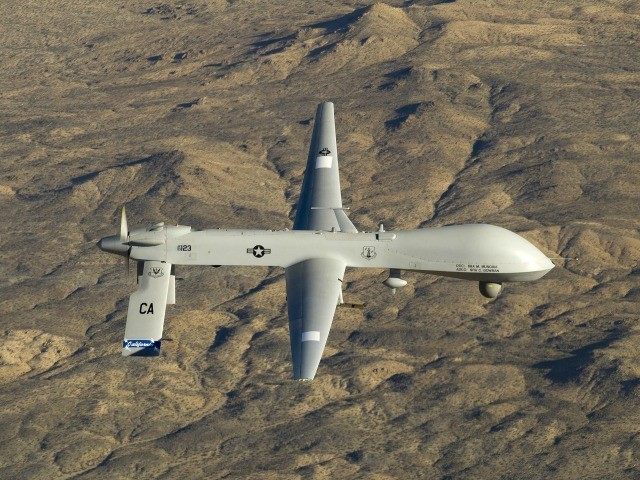The White House has granted the Pentagon legal authority to take offensive action against the Islamic State (ISIS/IS) branch in Afghanistan called Khorasan Province (ISIL-K), reports The Wall Street Journal (WSJ), citing unnamed senior Obama administration officials.
According to the report, it is “the first such authorization for military action against the extremist group outside Iraq and Syria… in a sign of how the fight has broadened.”
“The move came in response to a request in December by Defense Secretary Ash Carter for broader authority to expand the fight against Islamic State in the country as the group’s strength grows there, stretching the legal mandate of American forces to include offensive action,” it adds.
The U.S. and NATO ended their combat mission in Afghanistan at the end of 2014 and transitioned to an train, advise, and assist (TAA) role at the beginning of last year.
“Until now, such action by U.S. forces in the country technically has been limited to targeting al Qaeda and the Taliban—not Islamic State, whose operations primarily have been focused in Iraq and Syria,” points out WSJ. “Only in cases in which commanders believed U.S. forces in Afghanistan were in danger could they conduct operations against members of the militant group, who just months ago were seen as establishing a sleepy outpost with only loose affiliations to Islamic State.”
“The new military authorization represents a turnabout for President Barack Obama, who entered office in 2009 with the intention of concluding the war in Afghanistan, but faces the prospect of deeper U.S. involvement there during his remaining year on the job,” it adds. “Last year, Mr. Obama decided to leave roughly 9,800 American troops now in Afghanistan through most of 2016. Under the original plan, about half of those troops would have returned home by the end of 2015.”
The move also reflects President Obama’s intention to establish a legal foundation for U.S. military action that will carry out beyond his administration.
Last week, the president asked Congress in his State of the Union address to enact legislation formally authorizing broad U.S. military operations against ISIS.
U.S. Gen. John Campbell, the top commander of U.S. and NATO forces in Afghanistan, recently estimated that there are up to 3,000 ISIS fighters in Afghanistan.
“They are making their presence known: Islamic State claimed responsibility for a blast near the Pakistani consulate building in the eastern city of Jalalabad on Jan. 13 that killed seven members of the Afghan security forces, the first attack of its size there by the group,” notes the Journal.
“Currently, the American military’s two missions in Afghanistan are to carry out counterterrorism operations and prevent an al Qaeda resurgence in Afghanistan or a fresh plot against U.S. interests or the homeland,” it adds.
A United Nations report released last September revealed that ISIS is growing in Afghanistan and is actively recruiting in nearly 75 percent of the country’s 34 provinces.
The U.S.-led NATO mission in Afghanistan claimed earlier this week that the group lacks the “the ability to orchestrate or control operations” simultaneously in multiple areas in Afghanistan, outside of its stronghold in the eastern Afghan province of Nangarhar, located along the border of Pakistan.
“We currently characterize them as operationally emergent… We’re not seeing Daesh elements in Iraq or Syria orchestrating events here in Afghanistan,” U.S. Brig. Gen. Wilson Shoffner, a top spokesman for the U.S.-led NATO, told Pentagon reporters Tuesday, noting that the group also operates in other parts of the country, outside Nangarhar, in “small pockets that mainly consists of low-level recruiting and propaganda; we haven’t seen it organized.”
Nevertheless, Gen. Campbell and a recent Pentagon report indicated that the Khorasan Province is growing in Afghanistan.
In its latest edition of its propaganda magazine Dabiq, ISIS declared victory over their rival the Afghan Taliban, which they have been fighting for turf in the war-torn nation.
With the new mission, “we are prepared to take action against any terrorist group that poses a threat to U.S. interests or the homeland, including members of ISIL-K,” said an unnamed senior administration official in a statement, according to the Journal. “ISIL-K is the name used by U.S. officials for an Islamic State offshoot in Afghanistan.”
The K stands for Khorasan, which is an ancient term for territory that includes Afghanistan, Pakistan, parts of India, Iran, and other surrounding countries.
“The decision gives commanders new authority to target Islamic State outside of Iraq and Syria. Only once has the U.S. targeted an Islamic State leader outside of those countries: when American warplanes in Libya killed Abu Nabil, also known as Wissam Najm Abd Zayd al Zubayadi, an Iraqi long affiliated with al-Qaeda and who was linked to Islamic State, according to defense officials,” explains WSJ.
“That operation took place under authorities for so-called high-value targets, which differ from what the Pentagon was given to fight Islamic State in Afghanistan, officials said,” it adds.

COMMENTS
Please let us know if you're having issues with commenting.